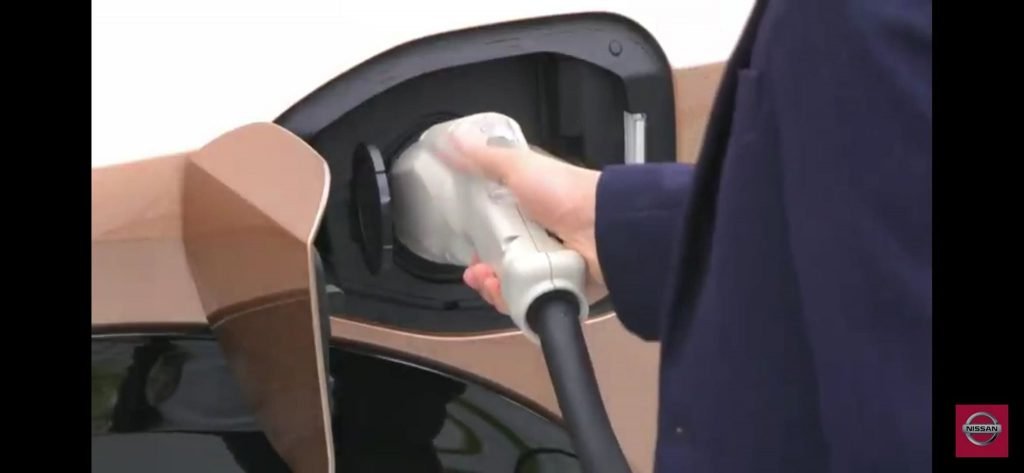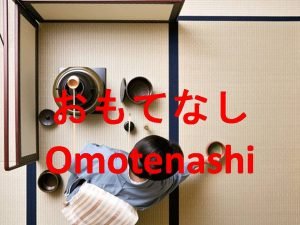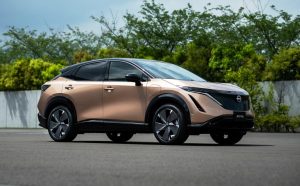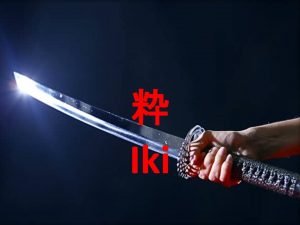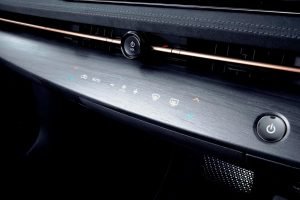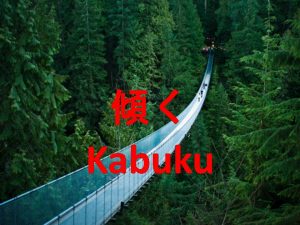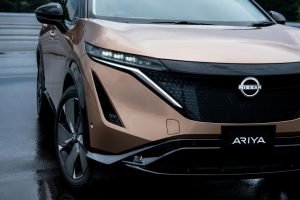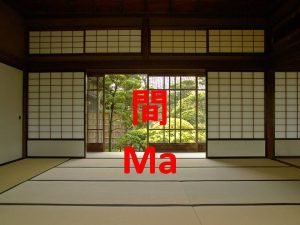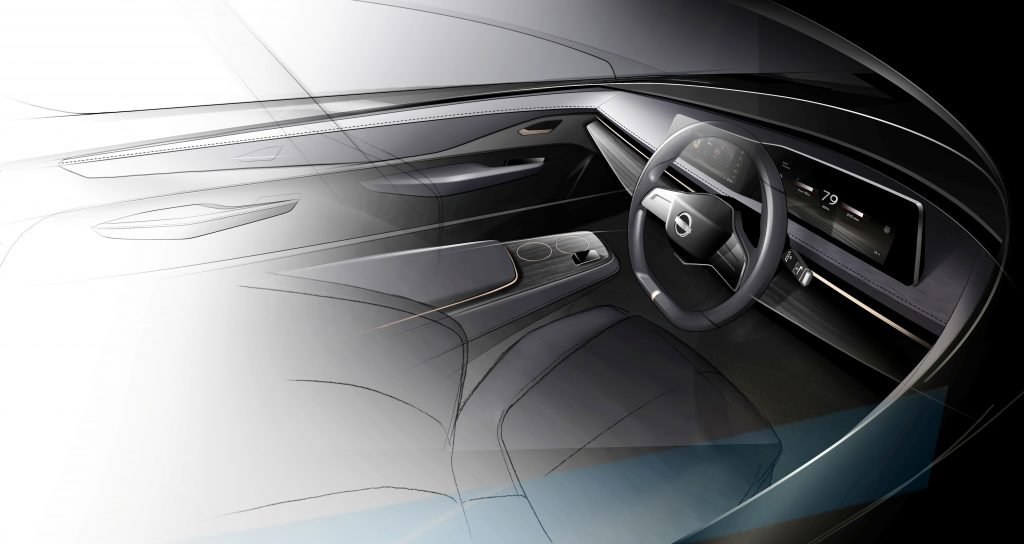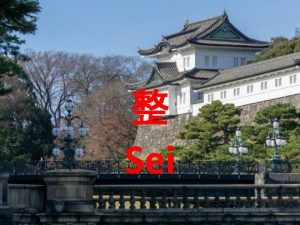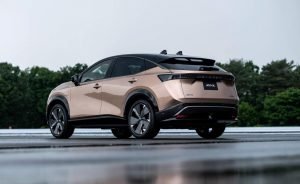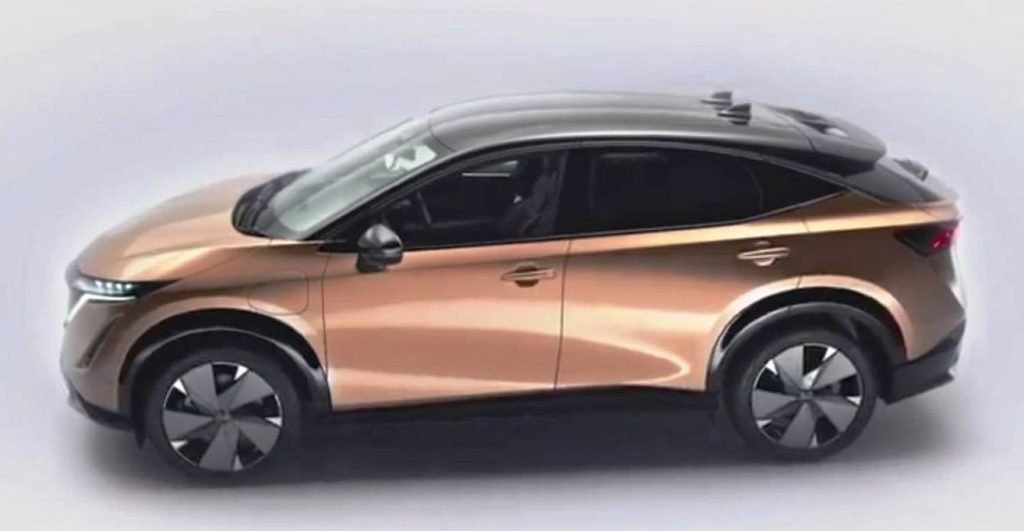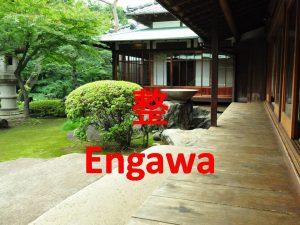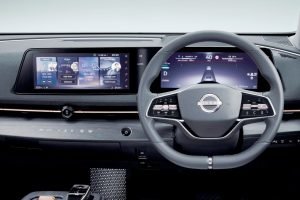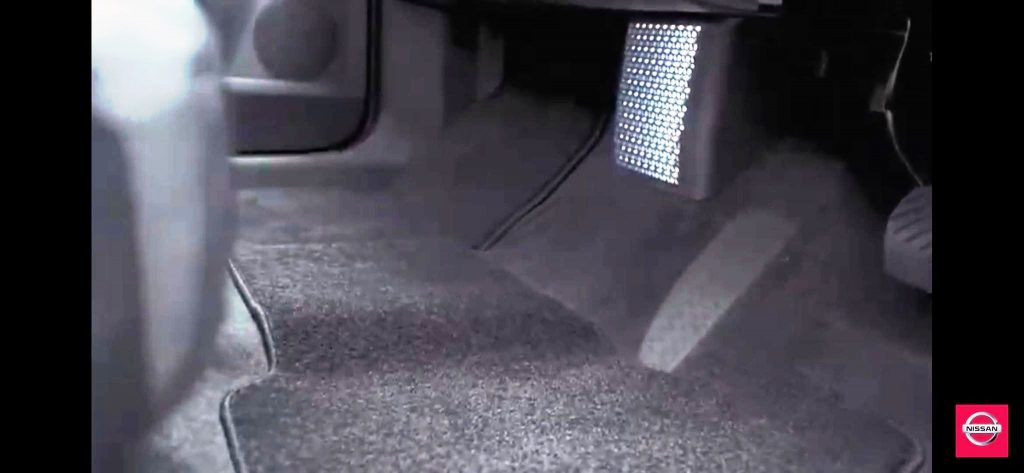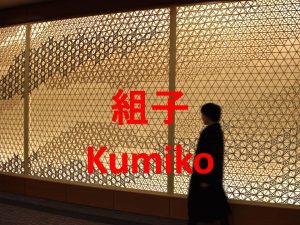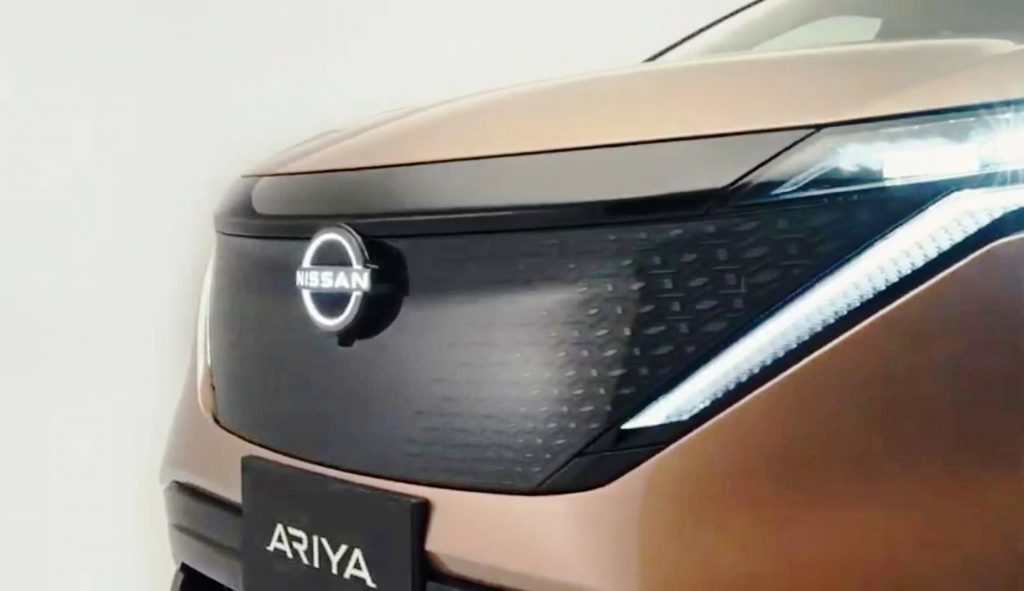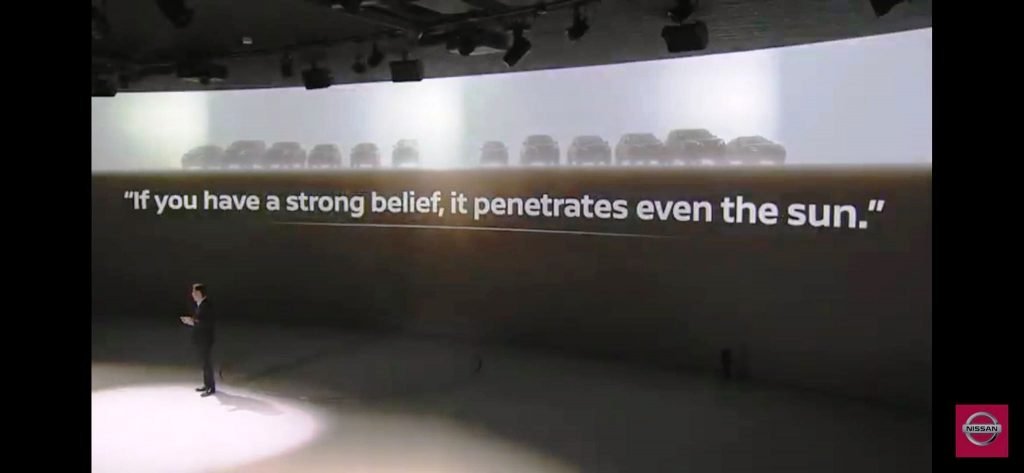As the current “New Normal” practice, Japanese car manufacturer Nissan Motor Co., Ltd. (NML) unveiled their all-new Nissan Ariya crossover electric vehicle (EV) through an online digital launch. Based on the Ariya Concept Vehicle that was shown at the 2019 Tokyo Motor Show, this electric crossover is the first production model to represent Nissan’s new electrified brand identity as it opens a new era of advanced electrification, interior layout, and seamless vehicle intelligence.
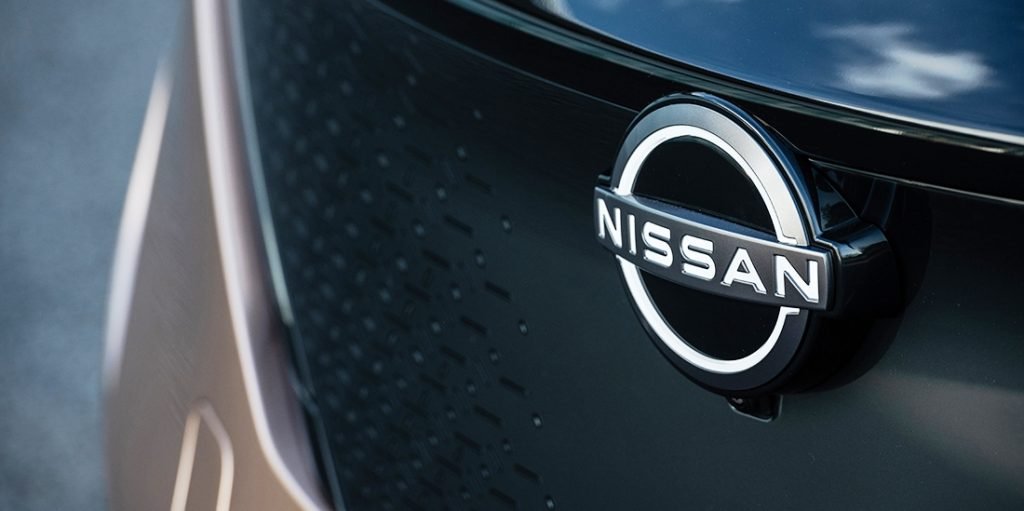
Nissan’s new electrified brand identity is prominently emblazoned on the front grille of the new Ariya.
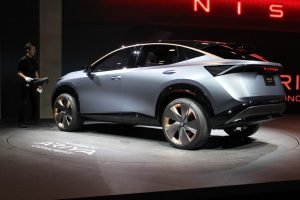
The Ariya seamlessly transitioned from concept vehicle to production thanks to its design and engineering ethos.
The online digital launch opened with NML President and Chief Executive Officer (CEO) Makoto Uchida who welcomed the viewers and showed Nissan’s direction towards the future of electrification. NML Chief Operating Officer (COO) Ashwani Gupta highlighted the Japanese philosophies that inspired the Ariya’s designers and engineers and briefly explained the company’s aggressive push towards a greener, cleaner future.
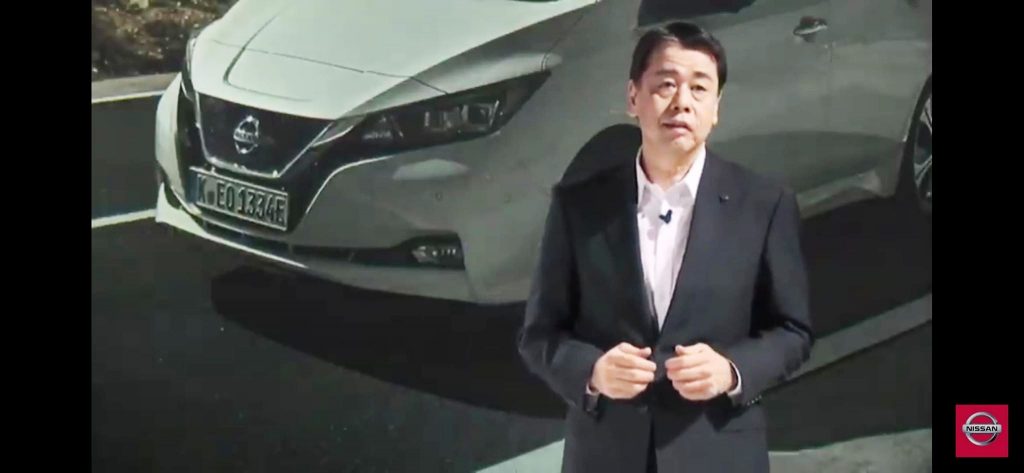
Nissan Motor Co. Ltd. President and CEO Makoto Uchida is very proud of the lead than Nissan has taken in the EV category.
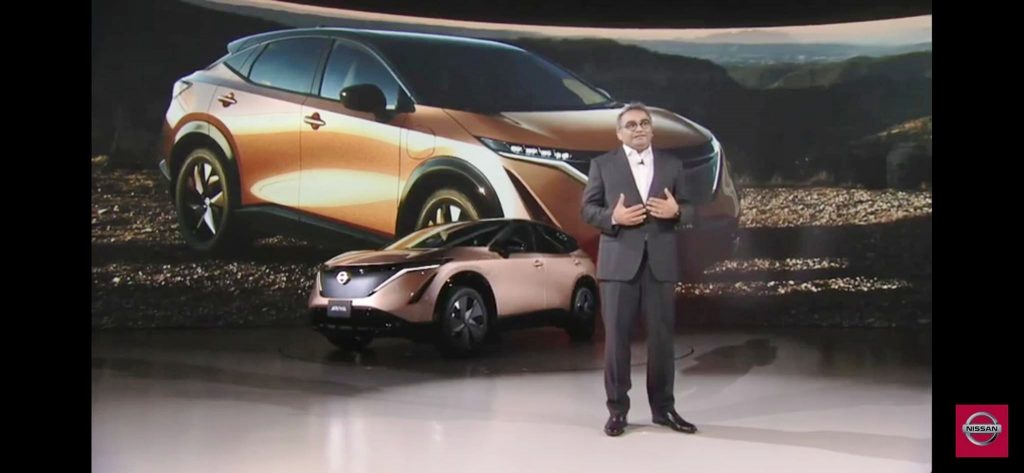
NML COO Ashwani Gupta showcases the features of the new Ariya and the company’s electrified direction.
Nissan Intelligent Mobility
Nissan’s Development Chief Product Specialist Makoto Fukuda narrated the Ariya’s journey from concept to production citing his childhood observation why production vehicles look different from the car show concepts on which they were supposed to be based. Fukuda was proud to show that the production Ariya is as close to the concept vehicle shown at the 46th Tokyo Motor Show last year. Meanwhile, Alliance EV Segment Chief Engineer Hiroki Isobe discussed the electric crossover’s power, range and performance and cited the design aspects such as the skateboard-type platform where the battery is at the floor pan of the vehicle to provide a lower center of gravity and improve interior space.
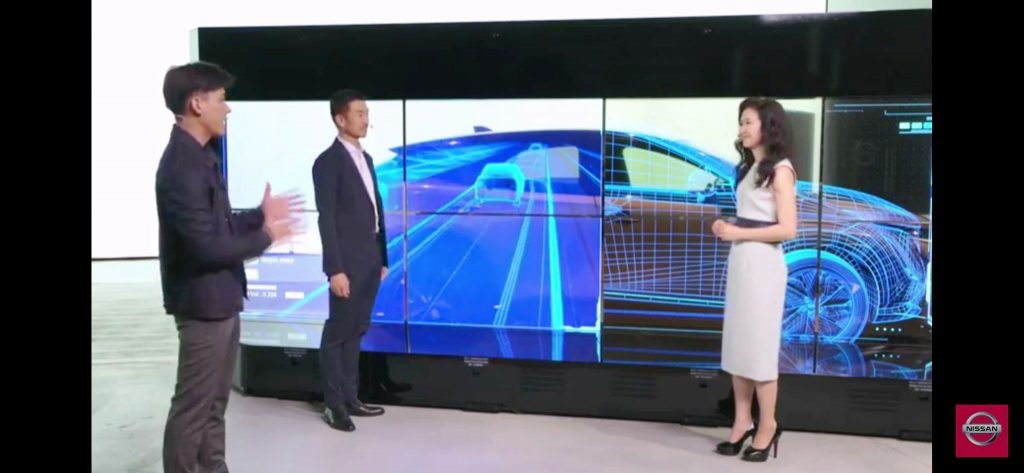
Product Development Specialist Makoto Fukuda and EV Chief Engineer Hiroshi Isobe discuss the engineering aspects of the Ariya.
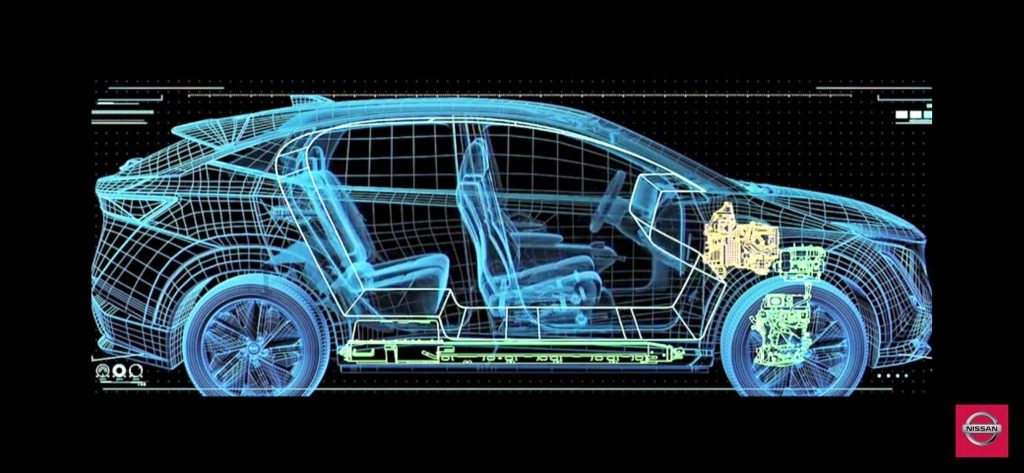
Nissan’s design and engineering teams gave the Ariya more interior space by positioning the major EV components intelligently.
As if the Nissan Ariya was not already high tech enough, John Schnoes, Alliance Global Director for Connected Car Services and Engineering, demonstrated the vehicle’s connectivity features. The Ariya can connect to Amazon Alexa that allows you to check the battery charge and the range of the vehicle before you even get out of the house. You can also have Alexa turn on the air-conditioner to cool the interior before you go into the Ariya. Its navigation system helps the Ariya “plan” the drive to maximize the battery power, increase the range, or even locate charging stations along the route. On the drive back, the Ariya’s connectivity with Alexa allows you to turn on your house lights, turn on the home A/C and other connected appliances, and even open the garage door as you drive back home. These were the stuff of James Bond and Sci-Fi movie cars that are now a reality.
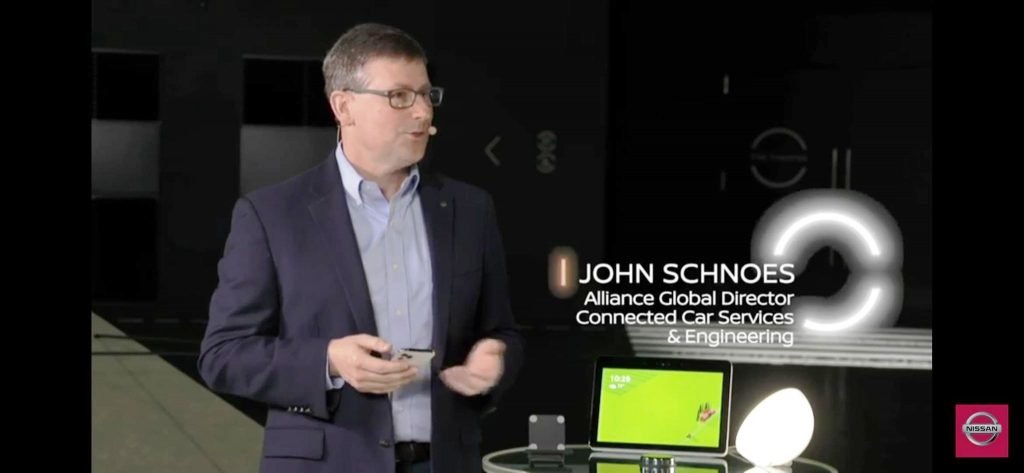
Alliance Global Director for Connected Car Service & Engineering John Schnoes talks about the Ariya wide range of connectivty aspects.
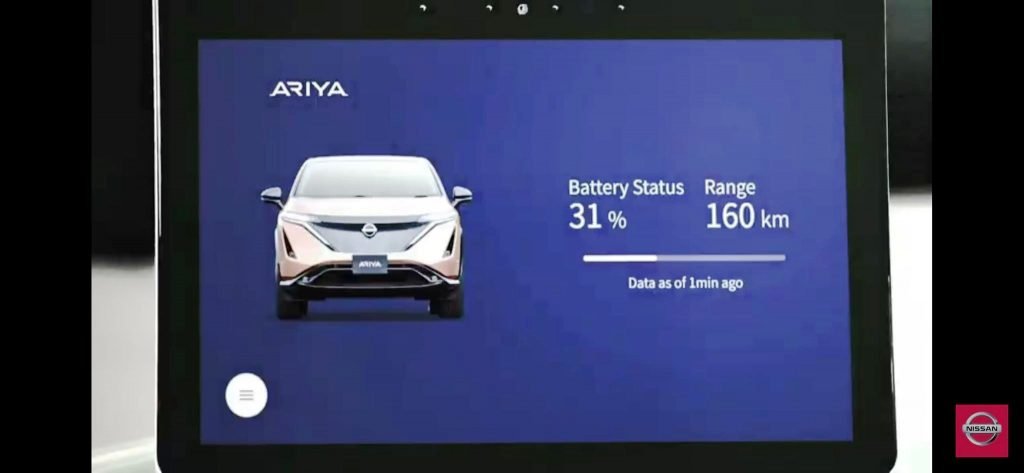
The Ariya can connect with Amazon’s Alexa and, through voice command, check the battery status and range of the vehicle before you even get into it.
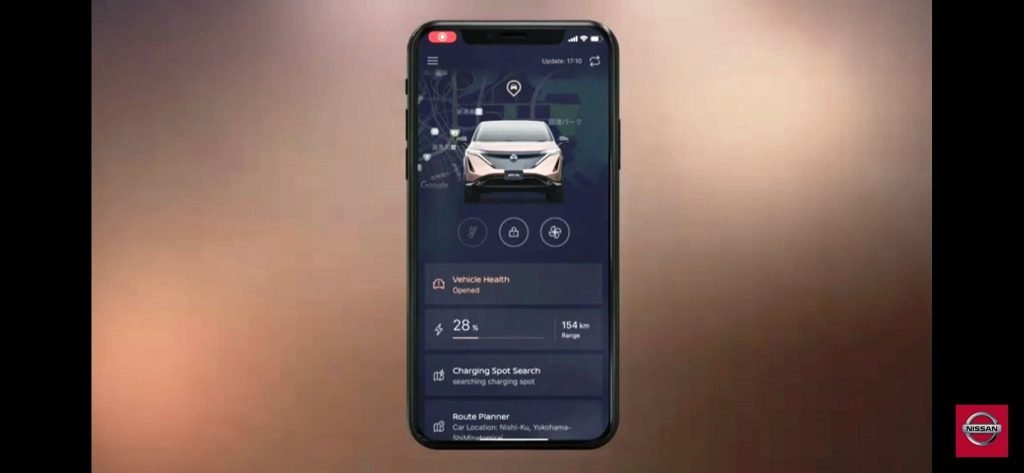
The Ariya can also connect to your mobile device and help you plan the route, identify charging stations, and even remotely turn the A/C on to cool the interior before you get in.
Timeless Japanese Futurism
Senior Vice President of Global Design Alfonso Albaisa and Senior Design Director Giovanny Arroba gave a more detailed explanation of how the designers worked from the beginning to provide the Ariya with a unique Japanese identity by tapping into time-honored Japanese philosophies and applying these in a way that is unique to Nissan. “We wanted to ensure that the soul of the vehicle reflect our distinctive Japanese DNA, conveyed in a simple, yet powerfully modern manner”, Albaisa said. “We dubbed this ‘Timeless Japanese Futurism’ and tapped into key Japanese words to inspire our global design team to produce the Ariya’s ultra-sleek, seamless, sharp and powerful form.”
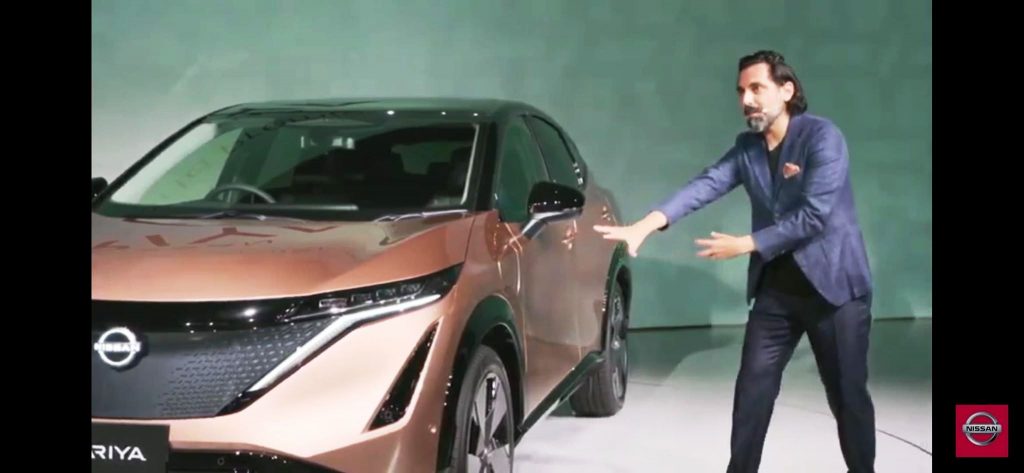
Senior Design Director Giovanny Arroba enthusiastically shows the lines and the design principles of the Ariya.
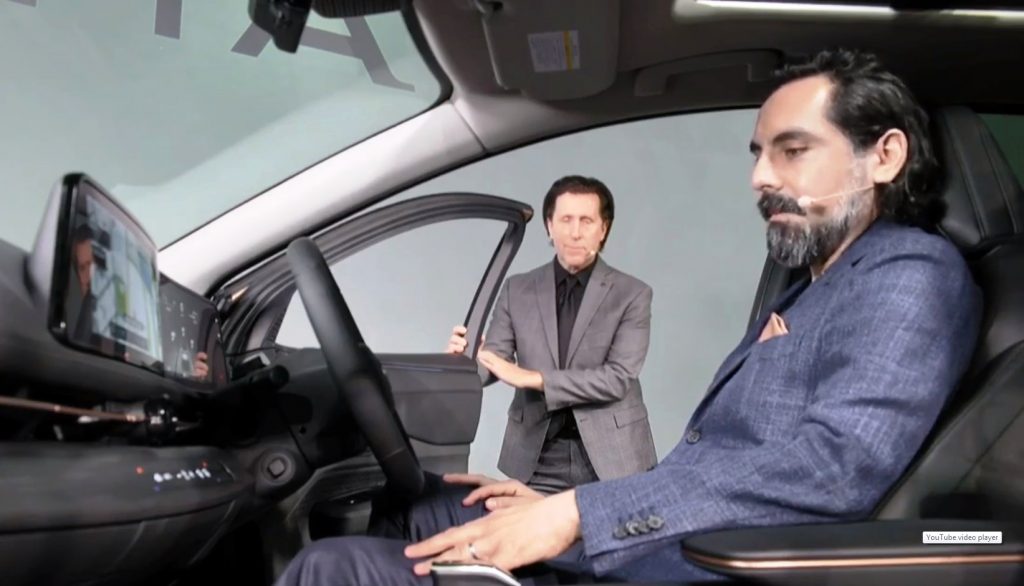
Nissan SVP of Global Design Alfonso Albaisa (standing) and Arroba (seated) shows off the Ariya’s interior.
Albaisa and Arroba were particularly proud of how the design of the Nissan Ariya took shape through a fundamentally Japanese approach. The Nissan design team cited the following timeless Japanese philosophies that were applied to this modern electric crossover.
The traditional definition of omotenashi is “offering more than what’s expected at this time, in this place, and only for you”. Omotenashi refers to offering guests and customers an unmatched level of hospitality, at times anticipating their needs and providing for them accordingly. It’s a way of conveying that this moment is just for you. “Omotenashi is an important term defining our Japanese DNA”, explained Albaisa. “Our next wave of products not only focuses solely on impressive power, convenience features and premium materials, but also redefines the full driving experience – from walking up to the Ariya to operating it, living with it and enhancing everyone’s daily life in a fresh, exciting way.
“With Ariya, we considered the meaning of omotenashi in the modern digital context. To be considerate is a key aspect of this tradition”, continued Albaisa. “For example, when a driver enters the Ariya, all icons are blacked out, only the start button is pulsating waiting for the driver to engage. When the button is pushed, all icons and switches gently come to life, including the startup sequence on the graphic user interface. As for the interface itself, the dual curved screens and large head-up display provides important information in an easily understandable format and controls are right where they need to be. And, in addition to functional ingenuity, we use andon lighting that gives the interior an architectural lounge-like atmosphere.”
The traditional definition of iki is “cutting-edge, with a simplistic, fresh feeling” while its most straightforward translation “chic”. But for Nissan’s designers, it represents creating something new and cutting-edge that departs from an existing impression. Nissan’s Executive Design Director Satoru Tai stated, “Iki may very well be one of the best ways to describe the Ariya, as it refers to the vehicle’s advanced design language and technology. Iki describes a reinvention of how we interface with a vehicle with breakthroughs in connectivity technology. It also describes the changing way we see an existing car segment.”
“Iki is the opposite of being flashy or showy, which can typically occur with new technology. With the Ariya, iki can be felt in the vehicle’s strong exterior presence and impressive beauty”, added Tai. “For example, the sharp section of the front fascia and the accents that run along the shoulder in a single line unify the design in a concise manner. Inside the car, the climate controls have a ‘disappearing’ design that makes them nearly invisible on the smooth instrument panel surface when not in use. Even though the climate control switches are integrated, their haptic feedback provides a feeling of pushing a mechanical switch when activated. That’s iki in its purest form.”
The traditional definition of kabuku is “a bold, diverse expression that goes against common approach”. Kabuku is a reaction to societal conventions and order. It embraces the strange and unorthodox as an expression of rebellion, but does it in a positive way. By thinking differently from others, it represents behavior that can only come from being a leader and risk-taker. “At Nissan, we channel this spirit by taking different approaches to the norm – not just in seeking new design inspirations, but also new ways to reinvent how we develop and construct, so as to elevate the driver and passenger’s experience”, said Tai.
“We look at what is, and what could be. You can see hints of kabuku in the approach to the Ariya itself. As an EV, it takes advantage of opportunities to repurpose and redesign. For example, the front grille has been reimagined as a ‘shield,’ taking on a new purpose of protecting technology while enabling higher levels of driver assistance. The front bumper has air ducts that improve aerodynamics without disrupting the surface beauty. These are a few examples of how we’re pursuing a future that’s more intuitive and seamlessly connected, and how we’ve taken on a pure and simple approach with a uniquely Japanese EV design language.”
The traditional definition of ma is a mastery of empty space by respecting its construction. At its core, ma is a mastery of space employing skills and techniques without complicated means. Albaisa explained, “In architecture, ma is a form of Japanese minimalism that at its root is not subtractive but a focus on harmony of elements from the beginning.”
“Both the exterior and interior of the Nissan Ariya reflect this concept. The exterior at a glance has a single dynamic line from front to rear, in actuality the forms that create this line are very sculptural and give the line a more artistic essence. The interior is tech minimal reflecting the daily life of our customers. With our engineers, we were able to reduce complexity by allowing functions to live within the decorative elements and delivering an unexpected open yet thrilling space.”
The traditional definition of sei is “the clever treatment of structures and details”. If ma is the mastery of space, then sei is how it’s achieved. This can come in the form of a clever treatment of a design, element or function. Alabaisa pointed out that designers always look for ways to cleverly pursue a purer representation of a design sketch into the physical form.
“With the Ariya, examples of sei include the exterior character lines that run along the vehicle”, he added. “When viewed together, they create a silent tension that expresses the movement of ma. The rear taillamp embodies a functional beauty in a single horizontal light blade motif. In the cabin, sei is represented by the haptic controls that integrate into the instrument panel with minimal icons or control gaps, while still providing a tactile response when touched. They look simple but contain technology that comes to life like magic when the driver needs it.”
The traditional definition of utsuroi is “the fluidity and asymmetry created by nature”. Nissan’s design team considers this term to be the essence of their inspiration, implementing the flowing expressions of nature to create new forms with a feeling of purpose and balance.
“Examples of utsuroi are present throughout the Ariya”, said Tai . “The tension and flowing forms of the exterior, specifically the rear quarter panels and the single crease line that runs around the body, express the design as unrestrained and encompass the entire vehicle. Inside, the long, unbroken instrument panel echoes the free-flowing exterior. Interior elements such as the intelligent lighting and copper accents flow from the front to rear of the cabin for a cohesive experience. The andon lighting exudes natural warmth that’s experienced by all occupants.”
Engawa is traditionally defined as “the undefined space between inside and outside; the space between here and there”. Traditional Japanese buildings have a narrow corridor that runs around the exterior. This space is called engawa and can be closed or open to the outside, like a porch. It represents a place or undefined space between inside and out, between where you are and where you’re going. Nissan sees this going beyond the physical, encompassing digital information and how we interact with it inside and outside the vehicle.
Tai pointed out that in the Nissan Ariya, engawa is represented by the information space connecting the outside and inside of the car. “An example of this is the display movement that makes us feel the flow of information from multiple sources at our fingertips and the passage of time through its digital 3D space”, he added.
Andon is Japanese paper lantern that produces a soft glow and used to illuminate homes, dating back to the days of the samurai. The lantern consists of a wooden frame with a thin piece of paper stretched around it. A candle placed inside produces a warm light that accentuates the surroundings.
“The andon lighting inside the Ariya adds to the relaxing, premium atmosphere and highlights the openness of the foot well and the doors”, explained Arroba. “Found on the insides of the front doors and under the instrument panel, the glow from the andon lighting provides a calming, welcoming ambience.”
Kumiko is a traditional Japanese technique of lattice woodworking. Practiced by only the most highly trained craftsmen, kumiko is a complex, beautiful geometric pattern that has been used for centuries.
“A reimagined kumiko pattern can be seen on the ‘shield,’ which replaces the grille that would be on a gasoline-powered vehicle”, explained Arroba. “Highlighting an electrified V-motion signature, the intricate kumiko pattern lies just under the shield’s smooth surface. Kumiko has been used inside the Nissan Ariya as well, to wrap around the glow of the andon lighting.”
The all-new Nissan Ariya is truly an exciting electric crossover vehicle that is creatively positioned to ease the “cross over” or migration from internal combustion engines to electric power. It defines the direction of Nissan as it goes towards the future of electrified intelligent mobility. Aside from the Ariya and the electrified brand image of Nissan, the online digital presentation left us with a strong message that was delivered by NML President and CEO Uchida, which serves as the guiding principle for this Japanese car company: “If you have a strong belief, it penetrates even the sun.” It should be a guiding principle for everyone.
 Power Wheels Magazine A Notch Above
Power Wheels Magazine A Notch Above



